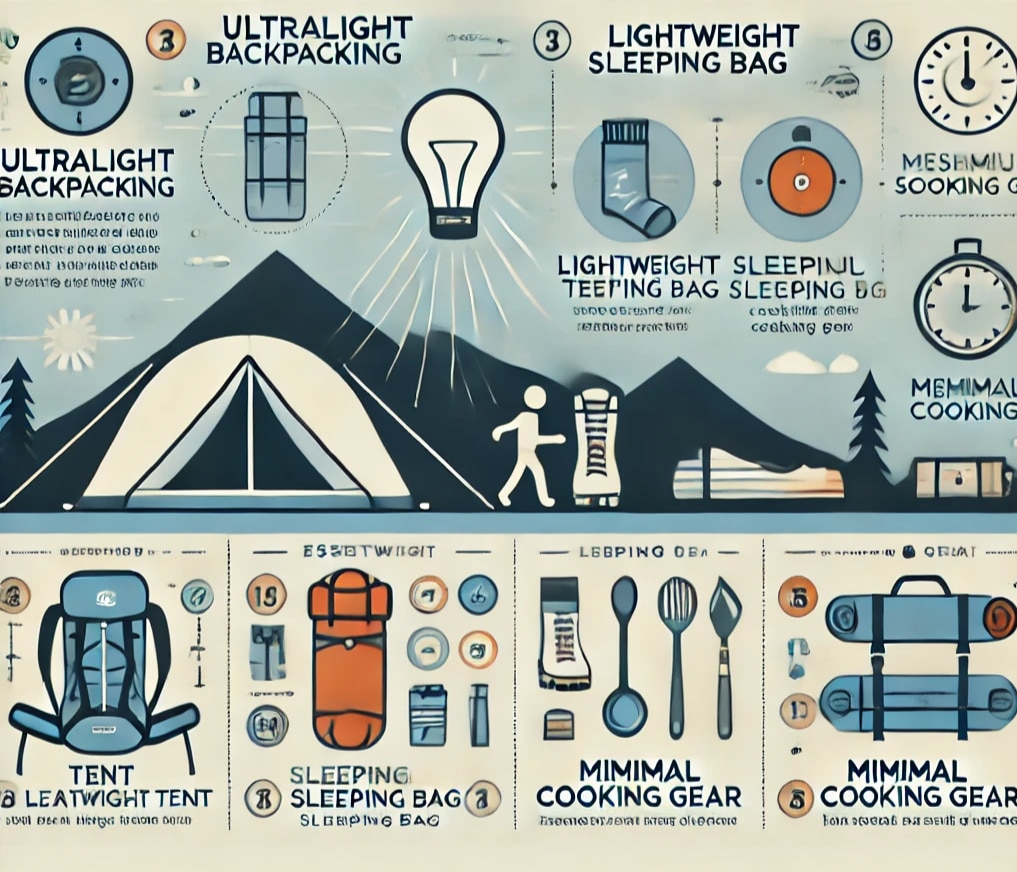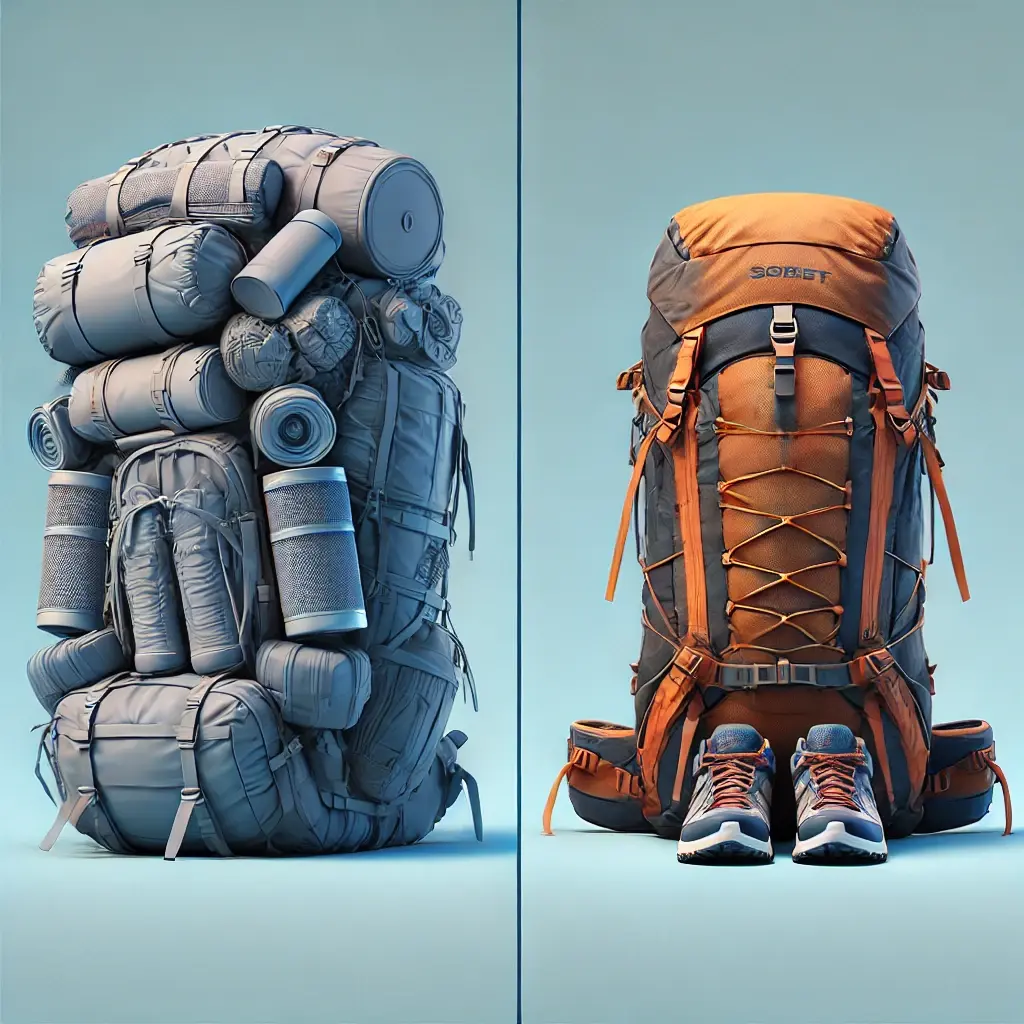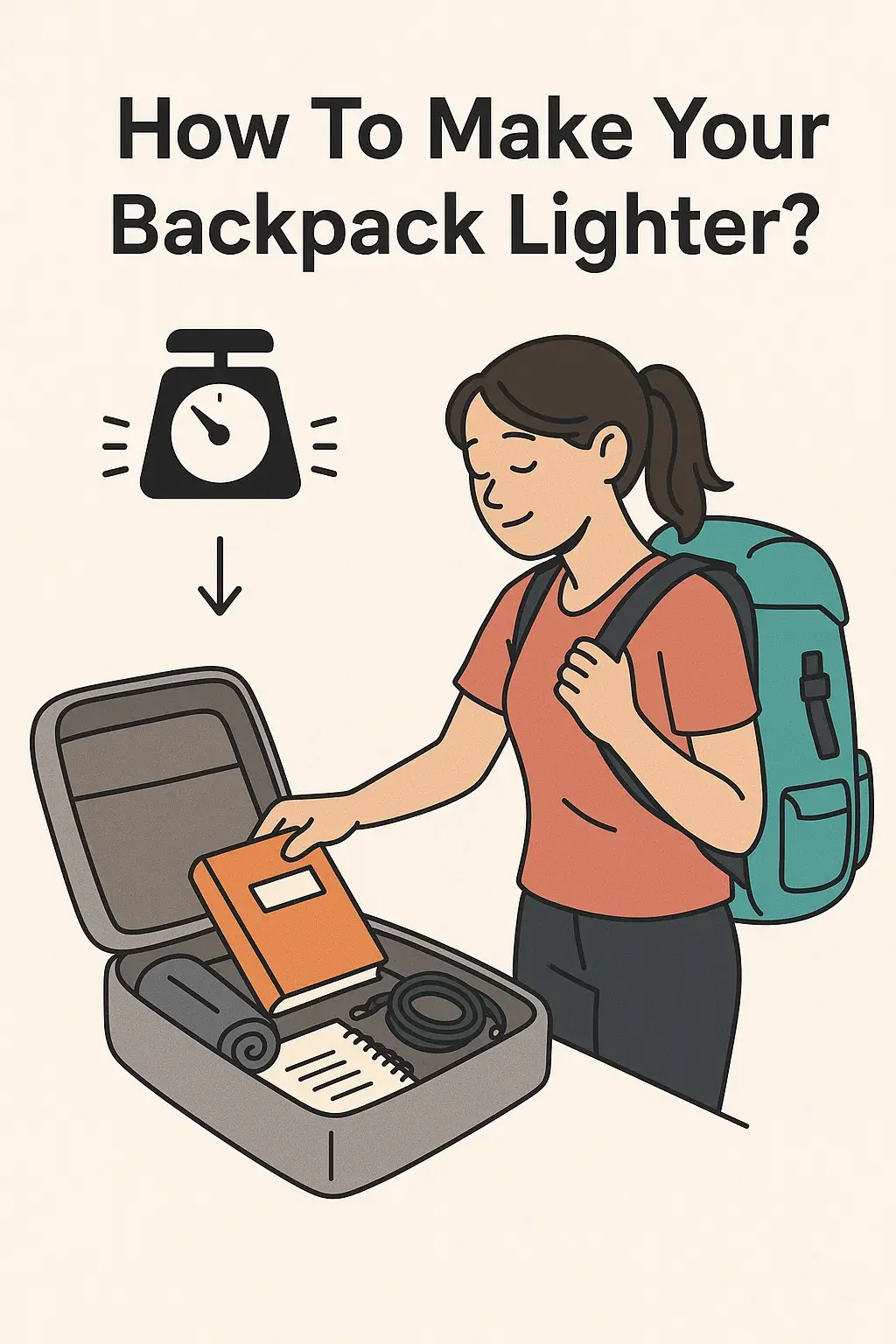How To Make Your Backpack Lighter? A heavy backpack can change a fun hike into a hard struggle. Many hikers tend to overpack, bring heavy gear, or select the wrong backpack size. This can lead to a tiring journey. The good news? You don’t have to sacrifice comfort or safety to go ultralight backpacking! You can lose extra weight by making smart changes. Switch to ultralight gear, use a lighter sleeping pad, and pick the right rain jacket. Choosing lightweight and multi-purpose items can save weight. This helps you lighten your load while keeping essential gear. Changing your sleep system can help. Swapping out heavy gear, like your sleeping pad or trekking poles, is also useful. This guide will help you see how every ounce matters. You’ll discover how to scale and weigh your gear, making sure you carry only what you need. With these 14 ultralight tips, you’ll be on your path to a lighter, more enjoyable hike!
1. Why Every Hiker Should Lighten Their Backpack?
Your backpack is key to your backpacking setup. Choosing the right one can lighten your load. A bulky or oversized backpack adds unnecessary pack weight, making long hikes exhausting. Instead, opt for an ultralight model that balances durability, comfort, and storage capacity. The goal is to carry only what you need while ensuring your pack is both lightweight and efficient.
Key Factors to Consider
- Pick an Ultralight Backpack: It helps save weight while keeping essentials organized.
- Choose the Right Capacity: A smaller backpack helps you pack less and eases strain.
- Weigh Your Pack: Use a scale to check your gear’s weight. This way, you can get rid of extra ounces.
- Comfort & Fit: Look for a well-padded hip belt and adjustable straps to distribute pack weight effectively.
- Multi-Purpose Features: Choose a backpack with built-in frames or extra compartments to avoid carrying separate storage solutions.
- Durability vs. Weight: The lightest packs are made from strong materials. They resist wear and tear, all while staying light.
2. Minimize Gear and Pack Only Essentials for Ultralight Backpacking
Backpacking with a fully loaded pack can make you slow and less enjoy the trip. How to lighten the backpack is by sticking to only the essentials while avoiding unnecessary gear. One of the best ways to do that is by picking lightweight and multi-purpose items. These are the items that may have more than one use. Keeping your pack weight down allows you to move quicker, decreases strain, and enhances your adventure.
Key Factors for Reducing Pack Weight
- Choose a Lighter Backpack: A heavy backpack adds unnecessary pack weight, so pick a lightweight one that suits your trip.
- Downsize Your Gear: Cut down on bulky equipment like an oversized sleep system or extra clothing to weigh less.
- Pack Smart Layers: Instead of heavy jackets, use layering with a fleece or insulated therm-a-rest to insulate effectively.
- Focus on Weight Savings: Swap heavy items for ultralight gear to make significant weight savings in your base weight.
- Carry Only One Pair of Shoes: Extra footwear adds pack weight, so stick to one pair that works for all conditions.
- Reduce the Weight of Water: Plan around water sources on your route instead of carrying excess.
- Use Multi-Purpose Gear: You can use a sleeping pad for sitting. Also, a trekking pole can hold up a tent.
- Keep a Minimal First-Aid Kit: Take only the basic first-aid items. Skip the big kit.
3. Choose Ultralight Gear to Lighten Your Backpack
Carrying a heavy pack can drain your energy quickly on the trail. To reduce the load, select one piece of gear that has several functions and bring only as much as you need. Keeping the weight of your essentials down makes hiking simpler and more enjoyable. A great way to save weight is by using ultralight versions of your gear, including your sleeping bag liner and cooking setup.

Key Factors for Choosing Ultralight Gear
- Make a list: Plan to avoid packing unnecessary items
- Prefer to Use a Tarp: A tarp instead of a tent can reduce the load significantly.
- Pack a lightweight sleeping bag liner: This helps keep weight to a minimum while adding warmth.
- Use a puffy jacket for insulation: A puffy layer keeps you warm without adding much weight.
- Choose Dehydrated Meals: Easier to carry than fresh food, depending on the length of your trip.
- Bring a Compact Stove: A Jetboil system is efficient and lightweight.
- Limit Water Carrying Weight: Carry only a liter at a time if you have frequent water sources nearby.
- Carry Essential Accessories Only: A headlamp, sunscreen, and a good base layer are all you need.
3. Downsize Your Clothing for a Lighter Pack
Packing too many clothes makes your backpack heavy. To keep weight down, bring only essentials and choose lightweight clothing. Layering efficiently helps you stay warm without overpacking. Picking one piece of gear that has multiple uses can reduce the load and enhance your hiking comfort.
Key Factors for Downsizing Clothing
- Wear One Pair of Clothes: Carry only one pair of hiking clothes and a dry set for camp.
- Pack a Base Layer: A lightweight base layer keeps you warm without bulk.
- Use a Puffy Jacket for Warmth: A puffy layer provides insulation without much weight.
- Choose a lightweight rain jacket: It keeps you dry without adding extra bulk.
- Pick Quick-Drying Fabrics: Synthetic or wool clothes dry faster and reduce the need for extras.
- Bring Only Essential Accessories: Items like sunscreen and a hat are more useful than extra clothing.
- Avoid Heavy Footwear: Lighter trail runners reduce the weight on your back compared to heavy boots.
5. Optimize Your Sleep System for a Lighter Pack
Your sleeping system is one of the heaviest items in your backpack. Choosing lighter options makes hiking a little easier. A good option is a layering system that keeps you warm enough without extra bulk. Using a closed-cell foam pad instead of an inflatable one can save weight. Look at recent trip reports to pick the best sleep gear for the weather you expect.
Things to Consider for a Lightweight Sleep System
- Follow the Rule of Thumb: Your sleep system should be warm enough for the temperatures you expect.
- Select a Lightweight Sleeping Bag: Ultralight sleeping bags keep you warm and cut down on several pounds of weight.
- Use a Closed-Cell Foam Pad: A closed-cell foam pad is lighter and lasts longer than inflatable types.
- Layering System for Warmth: A smart layering system with a puffy jacket keeps you warm without added bulk.
- Pack high-calorie, lightweight food: Bring high-calorie dried fruits and other forms of high-calorie foodstuffs to lessen the weight of your food pack.
- Plan for Food and water: Pack sufficient food and drinking water, and avoid overpacking extra baggage.
To make your backpacking more enjoyable, focus on lightweight sleep gear. Also, plan your food in pounds per day. This will help you pack smarter.
6. Choose the Right Food and Water Strategy
Your backpack can become heavier if you carry too much food and water. To keep the weight down, pack calorie-dense meals and use a hydration bladder or water filter instead of bulky water bottles. Plan where you can find water along the way so you don’t need to carry more than necessary. Having a smart food and water plan helps you keep your pack lighter and makes your hike easier.
Key Tips for Lighter Food and Water
- Carry Only What You Need: Avoid packing extra food or gear you won’t use.
- Use a Hydration Bladder: More lightweight and easier to carry than bottles.
- Pick High-Calorie Meals: More energy with less weight.
- Remove Extra Gear: If possible, take off your top lid to reduce weight.
- Pack Light Electronics: Bring a small power bank for quick recharges.
- Limit Layers: Only pack the insulating layers needed for the weather.
- Review After Every Trip: Leave behind anything you didn’t use or don’t need next time.
7. Choose Multi-Purpose Gear to Lighten Your Backpack
When backpacking, one great way to lighten your backpack is by selecting multi-purpose gear. For example, a rain jacket can be used as a windbreaker, and a sleeping pad can also help insulate your sleep system. This way, you can save weight while still carrying everything you need. Packing smart is key, especially if you’re going on a long hike.
Key Factors:
- Opt for multi-purpose items (like a rain jacket that also blocks wind).
- Choose lightweight gear with multiple uses (e.g., a sleeping pad for insulation).
- A first aid kit is important, but keep it minimal—carry only what you need.
- Added benefit of packing lightweight food with many calories, like dehydrated meals.
- For heavier items, consider a canister for fuel or opt for lighter alternatives.
8. Choose Lighter Sleeping Gear for Comfort
By selecting lighter sleeping bags or pads, you can easily cut down on the weight of your camping gear. You can insulate your sleeping bag without much extra weight. Use sleeping bag liners or foam pads. The right gear depends on the temperature and length of your trip, so choose carefully to stay comfortable while keeping your pack light.
Key Factors to Consider:
- Lightweight sleeping bags or pads reduce pack weight.
- Sleeping bag liners and foam pads help with warmth without adding bulk.
- Choose gear based on the temperature and length of your trip.

Conclusion:
Going ultralight in backpacking doesn’t mean sacrificing comfort. It’s about making wise choices to lighten your backpack while bringing what you need. A good strategy is to keep your pack weight under 10 pounds, considering your body weight and trip requirements. The second strategy is to use multipurpose gear to carry items to maximize efficiency. Keep an eye on temperature changes, and choose a wider range of layering options to manage condensation. Pack only the items that you truly need. Brands like REI offer 2.5-oz gear that helps cut weight. If you’ve started backpacking, focus on planning to stay light and comfortable on the trail!
